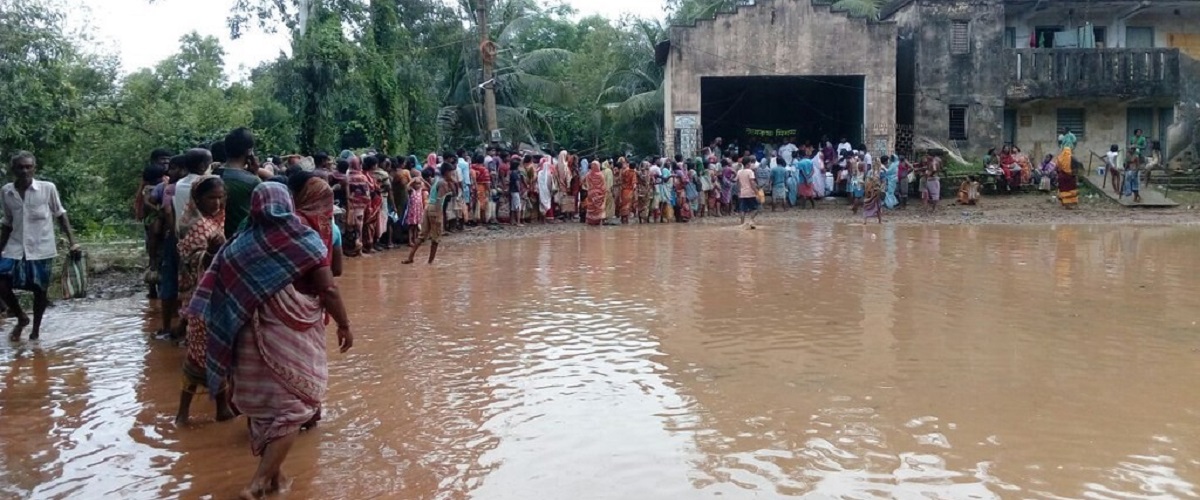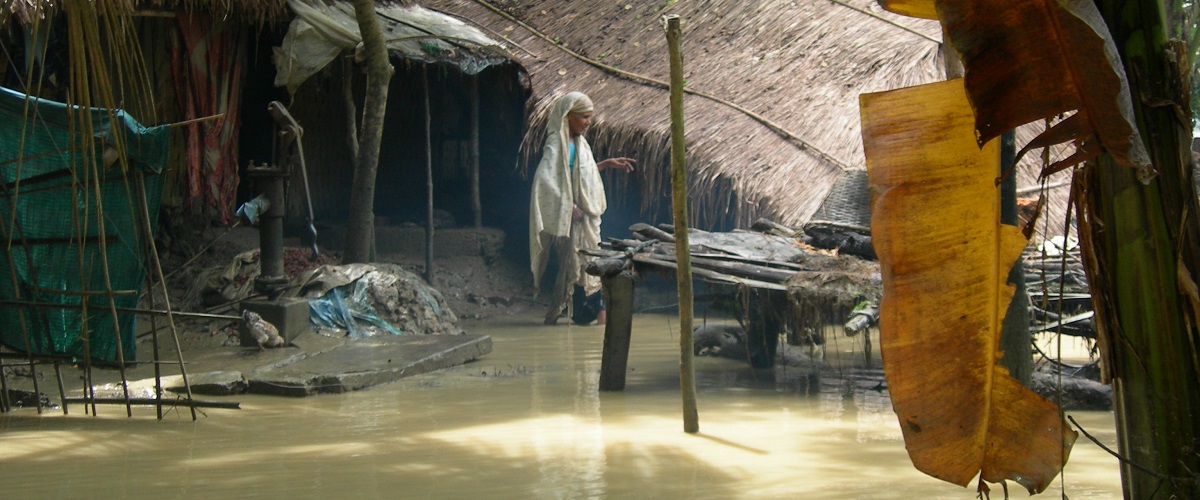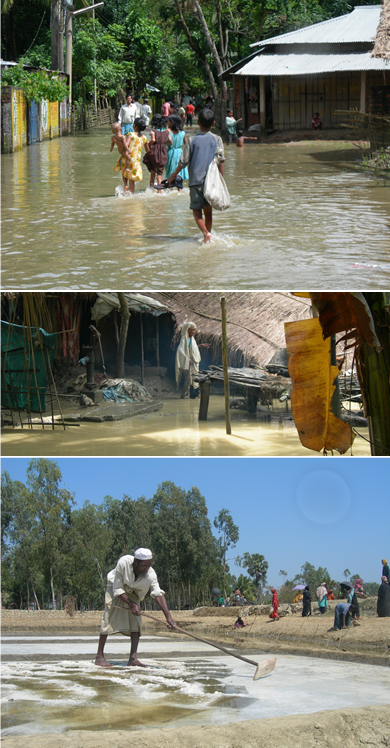
Environment and population health in the Bay of Bengal (EnHealth-BoB)
Environmental Linkages to Population Health and Wellbeing in Coastal Areas of the Bay of Bengal (EnHealth-BoB)
Sponsored by UoY GCRF - Stockholm Environment Institute Seed & Innovation Funds
PI and Co-Leads:
- Jadavpur University - Sugata Hazra , Shaberi Das, Isha Das
- icddr,b - SMA Manzoor Hanifi
- SEI Asia - Albert Salamanca
- PRISM - Aniruddha Dey , Piu Sengupta , Sutapa Ghosh
- SHIS - MA Wohab , Sabina Yesmin
- University of Leeds - Papiya Mazumdar
- University of York - Piran White

Background
Over half the world’s 2.4 billion people living in low-lying coastal zones and islands are concentrated in densely-populated low-and-middle-Income countries (LMICs) of South and Southeast Asia. The region continues to be a focus for persistent poverty and deprivation in diverse areas of development. It is vulnerable to disproportionately higher risks from both slow and sudden onsets of biophysical environmental events triggered by global climate change, which further accentuates adverse impacts on human health and livelihood.
The Bay of Bengal region has been a focal area for storm surges over the past century, with new and additional hazards emerging in the region from frequent coastal flooding, gradual sea-level rise and consequent inundation and damages from saline-water intrusion. These multiple threats mutually interact and reinforce adverse impacts on the overall coastal ecosystems. Coastal dwellers traditionally engaged in primary sector economic activities in the region are exposed to these different emergent adversities from the environment they live in, often accentuated by frequent natural hazards. These result in immediate public health crises as well as having longer-term impacts through posing critical challenges for the wider determinants of health and livelihood.
However, empirical, real-world evidence from the region demonstrating the complex causal pathways of interactions between human actions on the environment, and their public health implications remains scarce. There is a need to better understanding of the diverse direct and indirect risks of climate change in the region, related to changes in weather patterns (e.g., intensity and frequency of extreme events), and mediated through resultant changes in water, air, food quality and quantity, ecosystems and agriculture. In particular, more evidence is needed on how these factors affect livelihoods and generate profound effects on people’s physical, social and psychological wellbeing. The region urgently needs bespoke approaches to improve system-level efficiency across several domains through appropriate local level adaptations. This will help to build the resilience needed to deal with multiple hazards, both those faced currently as well as those that may arise in the not-too-distant future. Understanding the links between environmental change and health and wellbeing at regional and local level, which is essential to provide evidence on which policy and interventions can be improved, requires appropriate integration of available data across environmental, demographic and health domains.


About the Network
EnHealth-BoB is a network of individuals and institutions representing community-based organizations (CBOs), healthcare providers, policy makers, advocacy groups, research and academia based in India and Bangladesh, along with researchers from the Stockholm Environment Institute (SEI) Bangkok Thailand, the University of York (UoY) and the University of Leeds UK. The Network, developed with support from the UoY- Global Challenges Research Fund (GCRF) and the Stockholm Environment Institute Seed & Innovation Funds, addresses the dual challenges of development and environment primarily by focusing on the two critical impact areas of the SDG mission: (a) reducing climate risks and (b) improving health and wellbeing.
The EnHealth-BoB members bring rich, multidisciplinary expertise from ecology, geology, geography, medicine and public health, demography, social science and humanities, combined with key applied knowledge and skills from fields of disaster management, application of Geographic Information Systems (GIS), data science and participatory research. This is cemented further through important linkages and grassroots understanding of the CBO members representing people’s lived experiences in the frontier communities, providing core insights about the complex nature of the crisis and local solutions.
Aligning to the UoY’s vision on fostering multi-disciplinarity to approach complex challenges and exploring possible solutions, EnHealth-BoB network aims to strengthening research and civil-society partnerships across the coasts of BoB spreading through multiple countries in South and Southeast Asia.
EnHealth-BoB’s overall aim is to identify effective policy actions and develop public health interventions to respond to the growing challenges of climate-related impacts on public health and health systems.
We have three specific objectives:
1. Promoting understanding related to the impact of climate and environmental risks
on population health outcomes and health inequalities. Specifically, this will involve summarising existing evidence and understand communities’ risk perceptions on impacts of long-term exposure to climatic risks on mental health outcomes in vulnerable communities and the scope for local-level health system interventions.
2. Strengthening Information Systems
across key domains of climate/weather/natural hazards, environment and health to help develop, prioritise, evaluate and support programme implementation for improving public health outcomes. This will primarily involve identifying and mapping different information sources and levels, and scoping the feasibility of integrating different data systems and relevant levels of aggregation, and establishing community-level integrated surveillance units.
3. Fostering Community Perspective and Partnership
by strengthening research and local-community partnerships and networks. Key activities involve understanding existing planning and implementation barriers and improving inter-sectoral accountability towards developing resilient health systems and mechanisms to safeguard wider determinants of health against the emerging environmental risks

Links to the partners’ institutions and key-contacts:
- Interdisciplinary Global Development Centre, University of York, UK: Professor Piran White
- Stockholm Environmental Institute (SEI) Asia, Bangkok Thailand: Dr Albert Salamanca
- Jadavpur University, Kolkata, India: Professor Sugata Hazra
- icddr,b, Dhaka, Bangladesh: Dr Manzoor Ahmed Hanifi
- Professional Institute for Development and Socio Environmental Management (PRISM), Kolkata, India: Dr Aniruddha Dey
- Southern Health Improvement Samity (SHIS), West Bengal, India: Mr M. A. Wohab
Images (adapted):
- Flood Relief in Bengal by Ramakrishna Math (Public domain)
- Ammatul Fardousi - Own photos used with permission